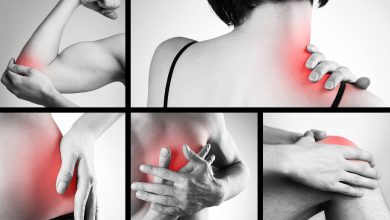
Professional medical gowns are a form of Personal Protective Equipment (PPE) ultra-useful in the health-care sector to keep infections at bay.
Medical gowns have classification into four levels depending on the level of protection they give. The low-level robes are for low-risk medical contacts, such as with a clinical encounter. The high-level gear is for professionals who are in cases of body fluids often, such as during invasive surgery.
Gowns are the second most needy and useful type of personal protective equipment. This is the reason why selecting a professional protective gowns supplier is important.
When dealing with patients and engaging in operations, the Centers for Disease Control and Prevention (CDC) recommends that healthcare professionals protect and cover their arms and other open body parts.
In the event of body fluids such as blood, bodily excretions, secretions, or gowns are extremely important to wear.
The American National Standards Institute/Association for the Advancement of Medical Instrumentation (ANSI/AAMI) establishes the specifications for healthcare gowns in order to maintain high national protective standards. It relies on test findings to guarantee that safety standards are met. Medical gowns from reliable professional protective gowns supplier serve to lower the danger of occupational health and safety hazards.
Gown types
A patient or healthcare professional may require a certain style of protective gown depending on the workplace environment and phenomenon exposure level. Medical and patient gowns are among the many gown models available.
According to the FDA, all high-quality medical gowns have a categorization in 1-4 levels.
-
Level 1
In this level, protective gowns are for minimal risk medical scenarios such as patient visits, seclusion, and basic treatment. These are light, breathable, and comfy, allowing you to wear them for longer durations of time.
-
Level 2
Gowns are suitable for low-risk situations such as drawing blood, suturing, and working in a pathology laboratory or critical care unit (ICU). Fluid resistance provides better protection than level 1 protective gowns. Two tests are necessary to confirm that the gown does not allow penetration or soakage.
-
Level 3
These gowns are for medical situations with considerable danger, such as inserting intravenous (IV) lines or extracting arterial blood. For extra safety, several of these medical robes include reinforce-fabric.
-
Level 4
Such medical gowns are by far the very protective gowns available and are ideal for high-risk scenarios such as surgery. They are perhaps highly resistant to bacteria and dissemination.
While these garments come in a variety of fabrics and colors, the pattern is consistent from quite a long time. These dresses are thigh-length and have short sleeves. The back has gaps or are open, and twill tape is commonly useful to keep it together.
Gowns for surgical procedures
Surgical robes are necessary to keep patients and healthcare personnel safe while undergoing surgery. This sort of outfit is strictly regulated by the FDA and is officially put up as a medical device that requires a 501(k) premarket notice.
A surgical gown’s main function is to prevent germs, pathogens, and body fluids from spreading between people. They should safeguard the body’s important zones, such as the arms, shoulders, knees, forearms and wrists. Surgical gowns from a trustworthy professional protective gowns supplier are necessary regardless of the amount of danger.
These gowns are of great quality since they are the last piece of clothing following surgery, reducing the chance of infection or other complications. For best comfort, they are generally light.
Gowns for isolation
When there is a medium to high danger of exposure and contamination, isolation robes are necessary. They’re important when vast critical zones are there in processes. They comply with FDA rules and are Class II medical devices, requiring a 501(k) premarket notice, much like regular gowns.
The seams of the protective gown should be able to withstand the same amount of fluid or liquid as the rest of the outfit. Isolation gowns from professional protective gowns supplier are often light and breathable, and comfy. These qualities make them appropriate for surgeons to wear throughout long procedures. These robes are of polypropylene, which makes them water resistant.
The isolation gown’s materials and fabrics have variable rates of resistance to blood and other biological fluids found during medical treatments.
Gowns for non-surgical procedures
These gowns look like surgical and isolation gowns, but they’re not for the purpose of medical operations. Class I medical equipment are what they’re called. This implies they do not really need to go through a premarket approval process. Non-surgical gowns are similar to conventional gowns in function; however, they offer less protection.
Non-surgical gowns are perfect for non-invasive treatments and low-risk medical situations when contamination is unlikely. Non-surgical gowns are commonly used for work in labs and clinical settings, despite their widespread use in the medical industry.
Coveralls
Doctors and other medical workers should take extraordinary measures in some situations to prevent and minimize disease spread. Hepatitis, HIV, AIDS, and Ebola may all be spread by bodily fluids that surgeons come into touch with during an operation.
Wearers of a coverall gown have additional covering, keeping their bodies from getting into close touch with the fluids. Plastic or a sort of waterproof cloth makes a coverall.
Conclusion
Gowns are important for the health and protection of both personnel and patients. Bacteria and dangerous viruses can persist for lengthy periods of time on personal protective equipment. Bacteria can survive for months depending on the substance, humidity conditions, and virus kind.
Medical gowns’ efficacy is influenced by the substances and quality of fabrics of their manufacture. To limit viral or bacterial transmission, healthcare practitioners and equipment manufacturers rely on textiles and their upkeep recommendations.
Manufacturers should test their protective gowns before releasing them on the market. The gown then goes for branding to show consumers that it fulfills safety regulations.
If you require personal protective equipment, you should get it from a reputable professional protective gowns supplier to ensure high quality.
Surgical gowns get a FDA-approval, and that you should definitely make sure they’re the appropriate healthcare grade for the job. The danger of harm and transmission of infection increases when the inappropriate degree of gown comes into usage.
Read more: BENEFITS OF ORDERING CAKE ONLINE



